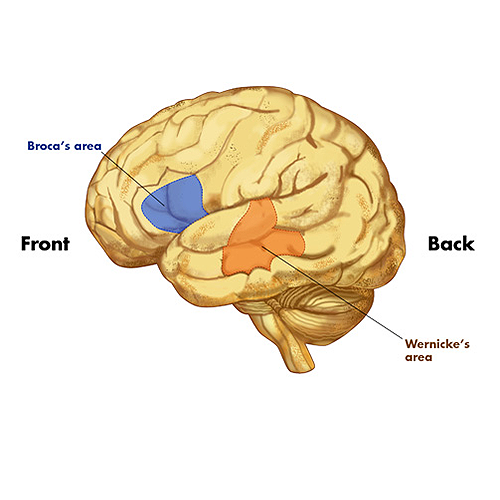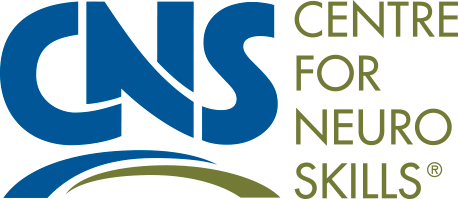What is Aphasia?
 From the National Institute on Deafness and Other Communication Disorders
From the National Institute on Deafness and Other Communication Disorders
Aphasia is a disorder that results from damage to portions of the brain that are responsible for language. For most people, these are areas on the left side (hemisphere) of the brain. Aphasia usually occurs suddenly, often as the result of a stroke or head injury, but it may also develop slowly, as in the case of a brain tumor, an infection, or dementia. The disorder impairs the expression and understanding of language as well as reading and writing. Aphasia may co-occur with speech disorders such as dysarthria or apraxia of speech, which also result from brain damage.
Who has aphasia?
Anyone can acquire aphasia, including children, but most people who have aphasia are middleaged or older. Men and women are equally affected. According to the National Aphasia Association, approximately 80,000 individuals acquire aphasia each year from strokes. About one million people in the United States currently have aphasia.
What causes aphasia?
Aphasia is caused by damage to one or more of the language areas of the brain. Many times, the cause of the brain injury is a stroke. A stroke occurs when blood is unable to reach a part of the brain. Brain cells die when they do not receive their normal supply of blood, which carries oxygen and important nutrients. Other causes of brain injury are severe blows to the head, brain tumors, brain infections, and other conditions that affect the brain.
What types of aphasia are there?
There are two broad categories of aphasia: fluent and non-fluent. Damage to the temporal lobe (the side portion) of the brain may result in a fluent aphasia called Wernicke’s aphasia (see figure). In most people, the damage occurs in the left temporal lobe, although it can result from damage to the right lobe as well. People with Wernicke’s aphasia may speak in long sentences that have no meaning, add unnecessary words, and even create made-up words. For example, someone with Wernicke’s aphasia may say, “You know that smoodle pinkered and that I want to get him round and take care of him like you want before.” As a result, it is often difficult to follow what the person is trying to say. People with Wernicke’s aphasia usually have great difficulty understanding speech, and they are often unaware of their mistakes. These individuals usually have no body weakness because their brain injury is not near the parts of the brain that control movement.
A type of non-fluent aphasia is Broca’s aphasia. People with Broca’s aphasia have damage to the frontal lobe of the brain. They frequently speak in short phrases that make sense but are produced with great effort. They often omit small words such as ”is,” ”and,” and ”the.” For example, a person with Broca’s aphasia may say, ”Walk dog,” meaning, ”I will take the dog for a walk,” or ”book book two table,” for ”There are two books on the table.” People with Broca’s aphasia typically understand the speech of others fairly well. Because of this, they are often aware of their difficulties and can become easily frustrated. People with Broca’s aphasia often have right-sided weakness or paralysis of the arm and leg because the frontal lobe is also important for motor movements.
Another type of non-fluent aphasia, global aphasia, results from damage to extensive portions of the language areas of the brain. Individuals with global aphasia have severe communication difficulties and may be extremely limited in their ability to speak or comprehend language.
There are other types of aphasia, each of which results from damage to different language areas in the brain. Some people may have difficulty repeating words and sentences even though they can speak and they understand the meaning of the word or sentence. Others may have difficulty naming objects even though they know what the object is and what it may be used for.
How is aphasia diagnosed?
Aphasia is usually first recognized by the physician who treats the person for his or her brain injury. Frequently this is a neurologist. The physician typically performs tests that require the person to follow commands, answer questions, name objects, and carry on a conversation. If the physician suspects aphasia, the patient is often referred to a speech- language pathologist, who performs a comprehensive examination of the person’s communication abilities. The examination includes the person’s ability to speak, express ideas, converse socially, understand language, read, and write, as well as the ability to swallow and to use alternative and augmentative communication.
Where can I get more information?
NIDCD maintains a directory of organizations that can answer questions and provide printed or electronic information on aphasia. Please see the list of organizations at www.nidcd.nih.gov/directory.
National Institute on Deafness and Other Communication Disorders
National Institutes of Health
31 Center Drive, MSC 2320
Bethesda, MD USA 20892-2320
E-mail: nidcdinfo@nidcd.nih.gov

